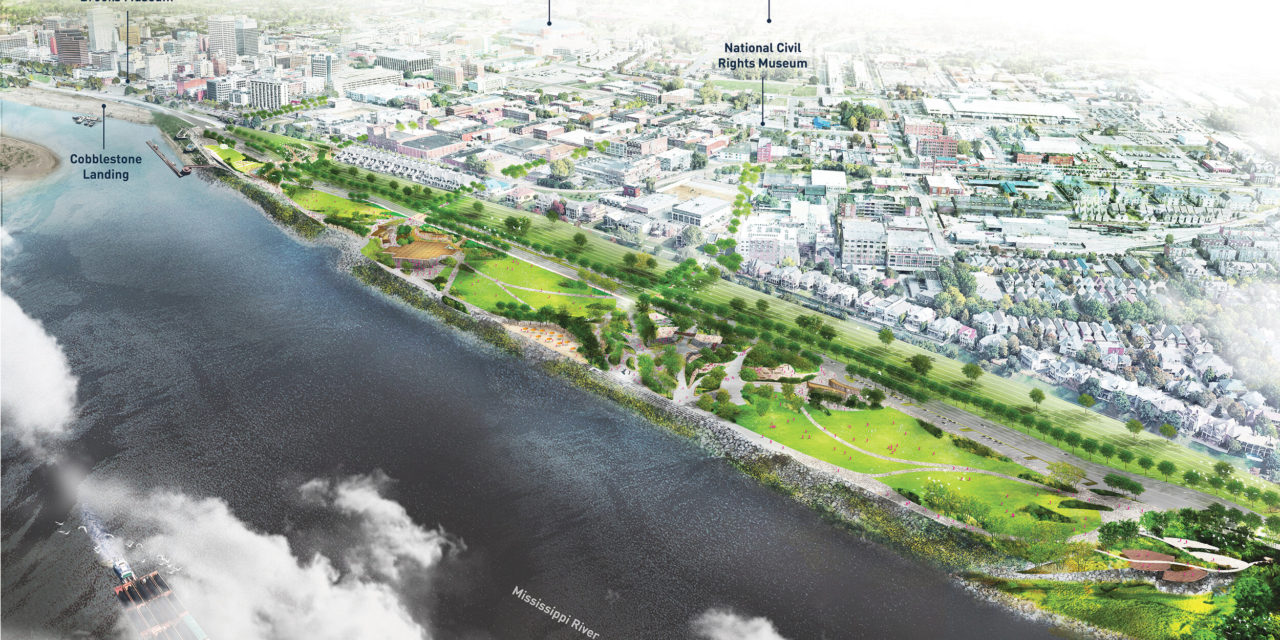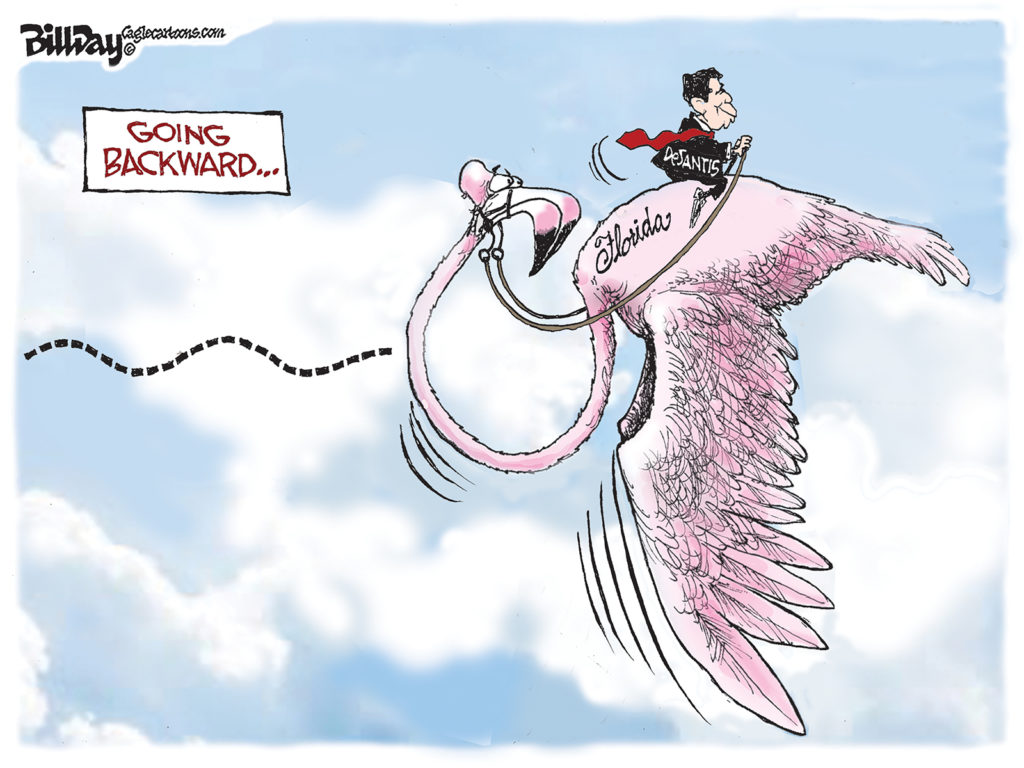Note: Every time I write about Tom Lee Park, I get emails questioning my motives and my integrity, so let me point out the facts yet again: My first blog post, Turning Tom Lee Into A Park, was published in 2010, long before the Memphis River Parks Partnership was created and long before anyone was proposing what a great park these 30 acres could be. In 2011, I wrote a similar column in Memphis magazine. That blog post 12 and a half years ago started with this sentence: “Tom Lee Park is the worst riverfront park in the country.” I am thrilled to see what the park is now becoming. It fulfills the last sentence in that blog post from so long ago which said a transformed Tom Lee Park would become a “symbol of the new spirit and new thinking that’s taking grip in our city right now.”
**
Part 1 of this commentary can be read here.
**
The evidence suggests that because it did not succeed in killing plans for a transformed Tom Lee Park, Memphis in May stepped up its attack in hopes of destroying the organization that raised $61 million to build a great riverfront park for Memphians, changed the park design 13 times at the request of the festival, and provided it with more space than it asked for.
A discouraging aspect of the blitzkrieg of attacks included Memphis City Council Chairman Martavius Jones – who happens to sit on the board of Memphis in May – when City of Memphis had to step in to get Memphis in May to negotiate in good faith for a contract to hold its events in Tom Lee Park.
Nine months after River Parks Partnership began negotiations, Memphis in May finally signed an agreement about nine days ago. Mayor Strickland bluntly blamed the delays on the festival, whose major stumbling block was its refusal to pay for the damages to the park caused by its events.
The position seemed to contradict common sense, not to mention fundamental business principles. After all, we live in a world of “you break it, you buy it.” And some of the loudest complainers on the Memphis in May board operate companies that in fact enforce a similar condition on their own properties. After all, does anyone think they can trash a room at a hotel and its owners would agree to pay for the damage?
To move the negotiations toward a conclusion, City of Memphis made an unprecedented $500,000 pledge to cover damage costs for Memphis in May, and even with that, it required talented City of Memphis COO Chandell Ryan (under the watchful eye of Mayor Strickland) to burn the midnight oil to consummate a final agreement that in typical fashion, Memphis in May announced with fanfare after doing all they could to undercut the negotiations.
Public Space Investments Pay Big Time
Back to Chairman Jones: in one of the final hearings before Memphis City Council, he rebuked Tyree Daniels, respected business leader and Partnership chairman, for citing the economic impact study by nationally-known HR&A Advisors which concluded that a new riverfront would produce $1.01 billion benefit to the economy over 10 years. HR&A Advisors has provided help, advice, and analysis with a broad range of public project investments, including housing, parks, redevelopment projects, retail strategies, master plans, transportation, and more in cities across the U.S.
Meanwhile, Mr. Jones cited Memphis in May’s economic impact study while refusing to listen to an explanation of the HR&A report. Curiously, he cautioned City Council about believing economic impact studies although he had just recited one as incontrovertible.
He added that Memphis in May is the biggest driver for tourism although March, April, June, and October consistently show higher downtown hotel occupancy rates than May.
When Mr. Daniels said: “We’d be happy to have our nationally recognized source explain methodology for our economic impact study,” Mr. Jones’ retorted: “It would be futile to do so.” In other words, “my mind’s made up, don’t confuse me with the facts.”
A discussion about methodology could have been instructive. The Memphis in May economic impact report that he puts so much stock in has highly questionable methodology. It is built on data supplied by Memphis in May rather than independent sources. It also appears to be triple-counting overnight visitors. Then, too, there are assumptions, like when the report says it “assumed that 33% of the visitor spending is for hotel room rental.”
In other words, Memphis in May can make the economic impact report say whatever it wants, and to do it with the data it provides for the calculations. It might explain why, between 2016 and 2019, there was an incredulous increase of 78% in economic impact based on the data supplied by Memphis in May.
What Mr. Jones didn’t understand, and seemed unwilling to learn, is that investments in public space are totally different than a festival. Festivals are temporal and the economic ripples are limited.
Public space investments in place like the riverfront increase property values, stimulate residential and commercial development, and are magnets for more people which increases hotel occupancy, personal spending, and tax revenues.
A Second Chance
So, here’s where we are: construction on Tom Lee Park is about to be stopped or slowed for more than 70 days to accommodate Memphis in May, all while the festival appears willing to embroil the community in a needless display of pique, misinformation, and division.
That’s why it is hard to reconcile Memphis in May’s persistent claim that River Parks Partnership is out to get it: the Partnership is in fact shutting down construction for more than two months to accommodate the festival.
Now’s the chance for Memphis in May to act with maturity and to do what’s best for Memphis. So far, it’s had difficulty doing either; however, that doesn’t mean the future has to be an extension of the past.
Memphis in May is a revered local festival. Tom Lee Park is on the cusp of being a revered local park. Already, a scientific poll showed 95% support from African Americans and 97% from 18 to 34-year-olds for the new park.
The good news is this is not an either-or decision. As Mayor Strickland once said, it’s not either-or, it’s both, and Memphis is now poised to have both.
Don’t Sabotage This Opportunity
Tom Lee Park is designed to be home to Memphis in May.
Some Memphis in May advocates may wish that the park had never been built. That day is gone.
Then too, some park lovers may wish that 308,764 square feet of space – more than Memphis in May asked for – had not been taken out of the park instead of being used for outdoor recreation installations.
To repeat, that day is gone.
Any attempts at this point to sabotage the park’s story and its impact undermine the important national publicity that its grand opening will attract and the new branding that Memphis will receive from it.
Memphis in May has the power to shape this story. It can be a story about a city excited by one of the country’s great riverfront parks or it can be a story portraying Memphis as a city at war with itself, repeating complaints, grievances, and division.
Tom Lee Park’s designers, landscapers, construction companies, and a world-renowned sculptor are best-in-class. If we get the next six months right, it will prove that Memphis is also a best-in-class.
It’s hard to think of a time in Memphis’ modern history when it more needs more positive publicity. It also needs a reason to be excited and to celebrate this mythical city.
Whether this happens comes down to whether Memphis in May will choose to contribute to the positive story for Memphis. We believe Memphis in May will do the right thing. After all, its mission statement says its purpose is to promote and celebrate Memphis.
It’s all about putting Memphis first.



